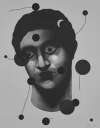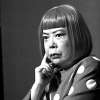David
Wojnarowicz
David Wojnarowicz was a Contemporary American painter, photographer, and writer, whose art was immersed in social activism. If you’re looking for original David Wojnarowicz prints and editions for sale or would like to sell, request a complimentary valuation and browse our network’s most in-demand works.
David Wojnarowicz art for sale
Discover David Wojnarowicz prints for sale, exclusively available through our private network of collectors. Explore signed and unsigned screenprints, lithographs, digital prints, and rare editioned proof prints by era-defining blue chip artists.
Sell Your Art
with Us
with Us
Join Our Network of Collectors. Buy, Sell and Track Demand
Biography
David Wojnarowicz was an American artist, writer, and influential figure in the New York City art scene of the 1980s. His work is celebrated for its unflinching engagement with contentious social and political issues, particularly those related to the AIDS crisis, sexuality, and marginalisation. Wojnarowicz's art is a visceral chronicle of his time, encapsulating the raw energy and the spirit of activism that defined a generation of artists.
Born on September 14, 1954, in Red Bank, New Jersey, Wojnarowicz had a tumultuous childhood that informed much of his later work. He experienced an abusive family life and experienced homelessness in New York City in his teens. These early experiences of poverty would become central themes in his art. Wojnarowicz was largely self-taught, but his brief enrolment at the School of Visual Arts in New York City marked a turning point in his artistic practice.
Wojnarowicz's artistic development is marked by his use of mixed media, from painting, photography, and film to writing and performance. His art is characterised by its confrontational style, often merging text with image to challenge the viewer. His work during the AIDS epidemic, a period that deeply affected him both personally and professionally, became a powerful voice in the fight against ignorance, fear, and governmental apathy.
Wojnarowicz's career is defined by his commitment to addressing social and political issues through his art. His mixed media approach, encompassing painting, photography, film, writing, and performance, allowed him to convey complex themes of marginalisation, sexuality, and the AIDS crisis with a confrontational and visceral style. His prints boldly combine text and violent imagery to reflect on capitalism’s oppressive forces.
Collaboration played a significant role in Wojnarowicz's career. He worked closely with photographer Peter Hujar, whose death from AIDS in 1987 profoundly impacted him, motivating him to create art that directly confronted the crisis. Wojnarowicz's involvement with the band 3 Teens Kill 4 and other artists in the East Village scene further motivated his pursuit.
Notable works from Wojnarowicz's career include Untitled (Falling Buffalos) (1988-89), a powerful allegory for the oppression of marginalised communities, and his Arthur Rimbaud In New York series, which explored themes of identity and urban life. His exhibitions, such as the politically charged Tongues Of Flame at Illinois State University, and his participation in the Whitney Biennial, brought his work to a broader audience and cemented his reputation as a provocative and influential artist.
Wojnarowicz's legacy extends beyond his visual art to his influential writings. His collection of essays, Close to the Knives: A Memoir of Disintegration, offers a confronting account of his life and activism. His work continues to fight against social injustice and is frequently exhibited internationally. His art remains central to discussions on censorship, artistic freedom, and the enduring impact of the AIDS crisis on the art world.
Wojnarowicz died on July 22, 1992, due to AIDS-related complications. His art is a powerful testament to the struggles and resilience of a community during one of its most harrowing periods, continuing to inspire action in the ongoing fight for social justice.

















